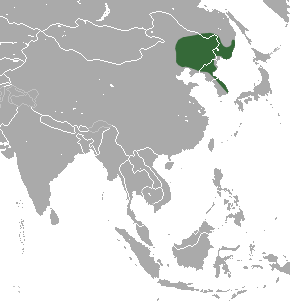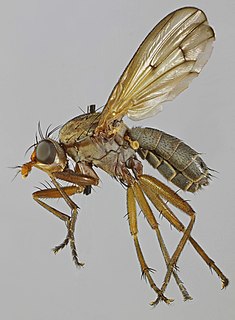
Malus is a genus of about 30–55 species of small deciduous trees or shrubs in the family Rosaceae, including the domesticated orchard apple – also known as the eating apple, cooking apple, or culinary apple. The other species are commonly known as crabapples, crab apples, crabtrees, or wild apples.

Coffea canephora, commonly known as robusta coffee, is a species of coffee that has its origins in central and western sub-Saharan Africa. It is a species of flowering plant in the family Rubiaceae. Though widely known as Coffea robusta, the plant is scientifically identified as Coffea canephora, which has two main varieties, robusta and nganda.

Grevillea robusta, commonly known as the southern silky oak, silk oak or silky oak, silver oak or Australian silver oak, is a flowering plant in the family Proteaceae. It is a tree, the largest species in its genus but is not closely related to the true oaks, Quercus. It is a native of eastern coastal Australia, growing in riverine, subtropical and dry rainforest environments.

The roundtail chub is a cyprinid fish in the genus Gila, of southwestern North America. It is native to the Colorado River drainage basin, including the Gila River and other tributaries, and in several other rivers. It is part of the “robusta complex”, which includes the Gila robusta robusta, G.r. grahami, and G.r. seminuda.

Eucalyptus robusta, commonly known as swamp mahogany or swamp messmate, is a tree native to eastern Australia. Growing in swampy or waterlogged soils, it is up to 30 m (98 ft) high with thick spongy reddish brown bark and dark green broad leaves, which help form a dense canopy. The white to cream flowers appear in autumn and winter. The leaves are commonly eaten by insects, and are a food item for the koala. It is an important winter-flowering species in eastern Australia, and has been planted extensively in many countries around the world. Its timber is used for firewood and in general construction.

The large mole or Ussuri mole, is a species of mammal in the family Talpidae. It is found in China, North Korea, South Korea, and Russia and lives in a long burrow, seldom emerging on the surface of the ground during the day.
Dichocera is a genus of bristle flies in the family Tachinidae. There are about seven described species in Dichocera.
Danepteryx robusta is a species in the family Tropiduchidae, in the order Hemiptera . Danepteryx robusta is found in North America.
Euryneura is a genus of soldier flies in the family Stratiomyidae. There are at least 8 described species in Euryneura.
Danepteryx is a genus of tropiduchid planthoppers in the family Tropiduchidae. There are about 6 described species in Danepteryx.

Tropiduchidae is a family of planthoppers in the order Hemiptera. There are at least 160 genera and 600 described species in Tropiduchidae.

Plateumaris is a genus of aquatic leaf beetles in the family Chrysomelidae. There are about 17 described species in Plateumaris.
Pachyceramyia is a genus of house flies, insects in the family Muscidae. There are about six described species in Pachyceramyia.
Dubiraphia is a genus of riffle beetles in the family Elmidae. There are about 11 described species in Dubiraphia.

Tetanocera is a genus of marsh flies, insects in the family Sciomyzidae. There are at least 50 described species in Tetanocera.

Macrohomotoma is a genus of plant-parasitic hemipterans in the family Homotomidae. There are about 15 described species in Macrohomotoma.
Datana robusta, the annual buttonweed or robust datana moth, is a species of moth in the family Notodontidae. It was first described by Herman Strecker in 1878 and it is found in North America.

Schroederella is a genus of flies in the family Heleomyzidae. There are about 14 described species in Schroederella.
Eumeta variegata, the paulownia bagworm, is a moth of the family Psychidae. The species was first described by Snellen in 1879. It is found in Japan, Papua New Guinea, India, the Solomon Islands and Sri Lanka.
Thaumatoperla is a genus of insect in the family Eustheniidae containing four species of stonefly, all endemic to the Victorian alpine area of Australia.










